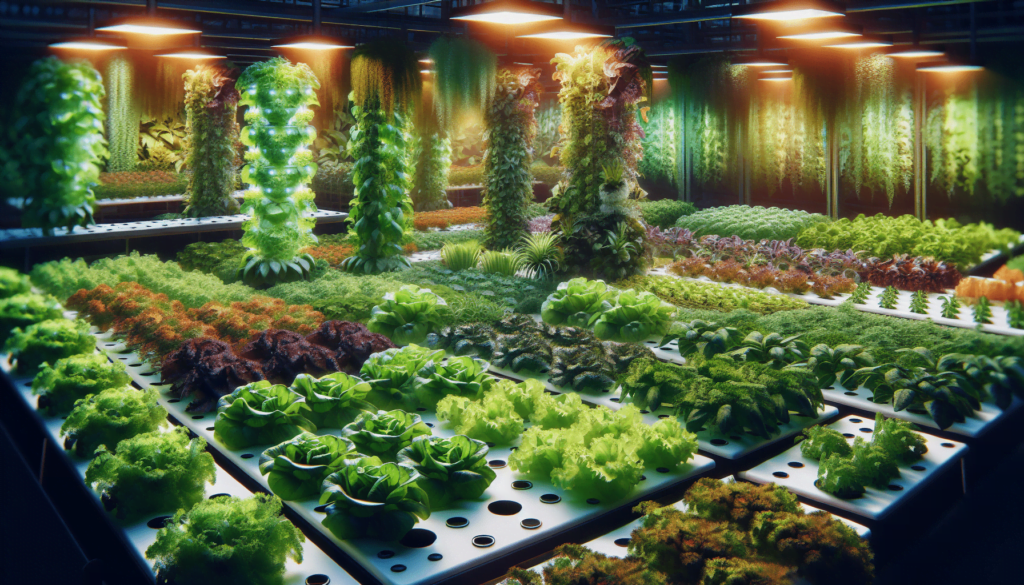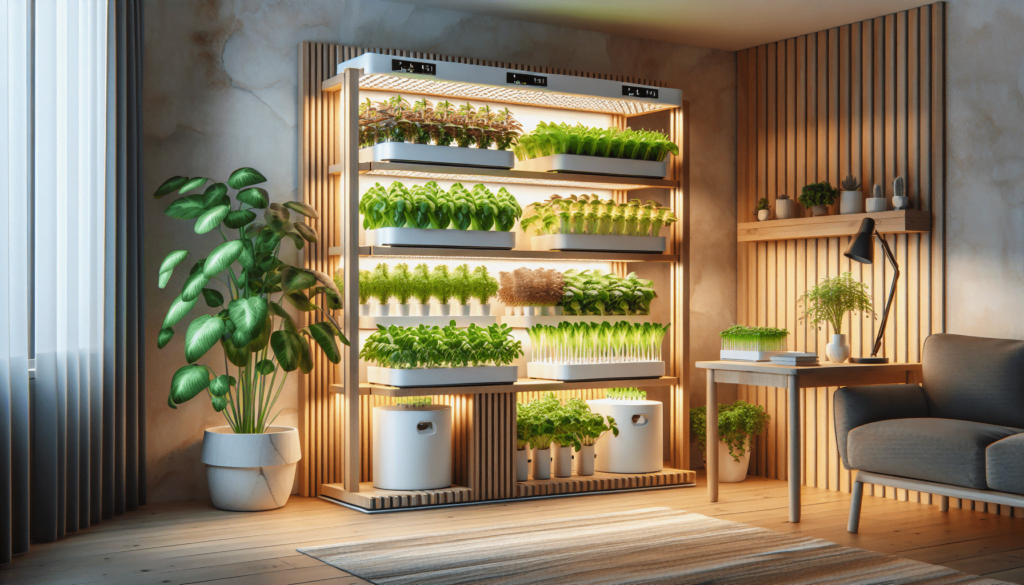Are you looking to up your game in hydroponic gardening? Fret not, as we have got you covered with some incredible tips to boost the yield in your hydroponic garden. This article comprehensively guides us through everything from selecting the right plants and nutrients to employing efficient techniques that ensure a superior bounty. So, strap in as we explore the top ways to raise the yields in hydroponic gardens.

Understanding Hydroponic System
Hydroponics is a fascinating alternate form of gardening that ditches the conventional soil requirement and instead, uses a nutrient-rich water-based solution to grow plants. This innovative gardening approach offers opportunities for crop growth throughout the year, and the freedom of not being dependent on the external environmental conditions.
What is Hydroponics
Let’s start by understanding hydroponics. We would normally picture a garden as a plot of land, however, hydroponics redefines gardening quite literally. In hydroponics, the plants are grown in water—sans soil. Plants use their roots to absorb nutrients from the water solution, which has been enriched with all the essential elements for plant growth.
Different Types of Hydroponic Systems
Hydroponic systems come in different types such as wick systems, deep water culture, nutrient film technique, ebb and flow, drip systems, and aeroponics. Each system carries its unique features and different degrees of complexity. Based on our needs and expertise, we can select the one best suited for our garden.
Assessing Your Hydroponic Garden Needs
Before embarking your hydroponic journey, we must evaluate our garden needs. Factors such as available space, the type of plants we wish to grow, our budget, and our commitment to maintenance should be considered. The objective of this assessment is to help us identify the most suitable hydroponic system for our situation.
Optimum Nutrient Management
Plants don’t just need water to grow; they need nutrients too. Nutrient management is a critical factor that would determine the success or failure of our hydroponics garden.
Understanding Plant Nutrient Needs
Plants need a variety of macro and micronutrients which they normally absorb from the soil. In hydroponics, we must ensure these nutrients are present in the water solution to provide for the plants’ needs.
Choosing the Right Hydroponic Nutrients
CPicking the right hydroponic nutrients involves an understanding of the nutrient needs of the plants we are growing. Commercially available nutrient solutions typically provide a balanced mix, but we may need to add specific nutrients based on the plants we’re growing.
Regular Checking and Adjustment of Nutrient Levels
Regular monitoring and adjustment of nutrient levels are important to ensure ideal growing conditions. We need to test the water regularly for pH and EC (Electrical conductivity) to make sure the nutrient levels are suitable for optimum plant growth.
Incorporating Organic Nutrients
Including organic nutrients in our hydroponic system is possible and beneficial. Organic nutrients offer the benefit of adding beneficial microorganisms to our system that enhances plant growth.
Lighting for Maximum Yield
Just as in traditional gardening, lighting plays an incredibly important role in hydroponics. Let’s delve into this subject.
Importance of Proper Lighting
Proper lighting is essential for indoor hydroponic systems as sunlight, which naturally provides a full spectrum of light for plants, is inadequate or unavailable.
Choosing the Right Hydroponic Lights
Choosing the right hydroponic lights depend on the plants we’re growing, the available space, and our budget. Options include HID (High-Intensity Discharge), Fluorescent, and LED lights.
Utilizing Light Movers
Light movers are tools that can help us maximize light exposure to our plants. They work by moving lights along a track, ensuring the plants get evenly distributed light.
Managing Light Cycles
Different stages of plant growth require different light cycles. It’s important to adjust the light exposure according to these growth stages to ensure maximal yield.
Maintaining Ideal Temperature and Humidity
Controlling temperature and humidity is important in a hydroponic garden. Let’s explore why!
Understanding the Ideal Hydroponic Temperature
The ideal hydroponic temperature varies depending on the plant type but generally, sits around 65-80 degrees Fahrenheit.
Tools for Temperature and Humidity Control
Various tools such as heaters, coolers, dehumidifiers, and humidifiers can be used to control the temperature and humidity of our hydroponic garden.
Importance of Regular Monitoring
Regular monitoring can help identify any drastic changes in the temperature or humidity that could affect plant health.
Adjusting Temperature and Humidity for Different Plant Growth Stages
Like light cycles, temperature and humidity requirements can change at different stages of plant growth, and we need to adjust accordingly.
Proper pH Management
pH is an important factor in determining how well nutrients are absorbed by plants.
Understanding pH Importance in Hydroponics
The pH level in hydroponics affects the plants’ ability to take up the essential nutrients, which are available at varying levels at different pH ranges.
How to Measure and Adjust pH Levels
Regularly measuring pH levels ensures that the environment is optimal for nutrient uptake. We can adjust pH levels using pH up or pH down solutions.
Dealing with pH Fluctuations
pH fluctuations can have damaging effects on plants. Regular monitoring and adjusting of pH is necessary to create a stable environment for our plants.
Pruning and Training Your Plants
Pruning and training plants helps optimize growth and yields.
Methods of Plant Pruning
There are several methods of plant pruning such as topping and FIM.
Benefits of Plant Training
Plant training helps make the best use of your grow space and light, and can lead to bigger yields.
Tools for Pruning and Training Plants
Pruning shears, trellis nets, and plant ties are some tools we can use for pruning and training our plants.
Effective Pest and Disease Control
Hydroponic gardens are not immune to diseases and pests.
Common Pests and Diseases in Hydroponic Gardens
Slugs, aphids, and gray mold are some common pests and diseases that can affect hydroponic gardens.
Preventive Measures
By ensuring a clean environment, using sterile tools, and keeping an eye out for the early signs of damage, we can prevent most pest and disease problems.
Best Pesticides and Treatments for Hydroponic Gardens
Neem oil, insecticidal soaps, and biological controls are effective treatments for pests and diseases in hydroponic gardens.
Choosing the Right Plants for Hydroponics
Not all plants are suited for hydroponic gardening.
Consider Your Garden’s Specific Conditions
Choosing the right plants for your hydroponic system would depend on your specific garden conditions such as the system type, lighting, and climate.
Best Plants for Hydroponic Cultivation
Lettuce, herbs, peppers, and tomatoes are some of the best plants to grow in hydroponic gardens.
Maximizing Yield with Crop Rotation
Crop rotation can help us avoid pests and diseases, and maximize the yield from our hydroponic garden.
Optimum Air Circulation
Air circulation is critical to the health of plants in a hydroponic garden.
Understanding Importance of Air Circulation
Proper air circulation in a hydroponic system ensures all the plants receive an adequate supply of CO2 which is essential for photosynthesis.
Choosing the Right Fans for Your Hydroponic System
Choosing the right fans for our system depends on the size of our grow space and the requirements of our plants.
Positioning for Effective Air Circulation
It’s crucial to properly position our fans to facilitate even air flow throughout our hydroponic garden.
Regular Cleaning and Maintenance
Regular cleaning and maintenance play a key role in managing a successful hydroponic garden.
Cleaning Your Hydroponics System
Cleaning the hydroponic system regularly prevents the buildup of algae, salts, and pathogens and ensures healthy plant growth.
Regular Maintenance Checks
Regular checks can help us spot problems early and take preventive measures.
Replacing Worn Out Parts
Replacing worn out parts regularly ensures the efficient functioning of our hydroponic system.
To conclude, the success of our hydroponic garden depends on numerous factors like the choice of system, nutrient management, lighting, temperature control, and regular maintenance among others. By giving due attention to all these factors, we are sure to make our hydroponic gardening journey a rewarding one.
Forum
Got something to share or a question to ask? Jump in and start a conversation! Whether it’s tips, advice, or just sharing your experiences, we’d love to hear from you. Don’t be shy—your input could inspire or help someone else!- This forum has 1 topic, and was last updated 10 months, 1 week ago by .
- Topic
- Voices
- Last Post
- You must be logged in to create new topics.


